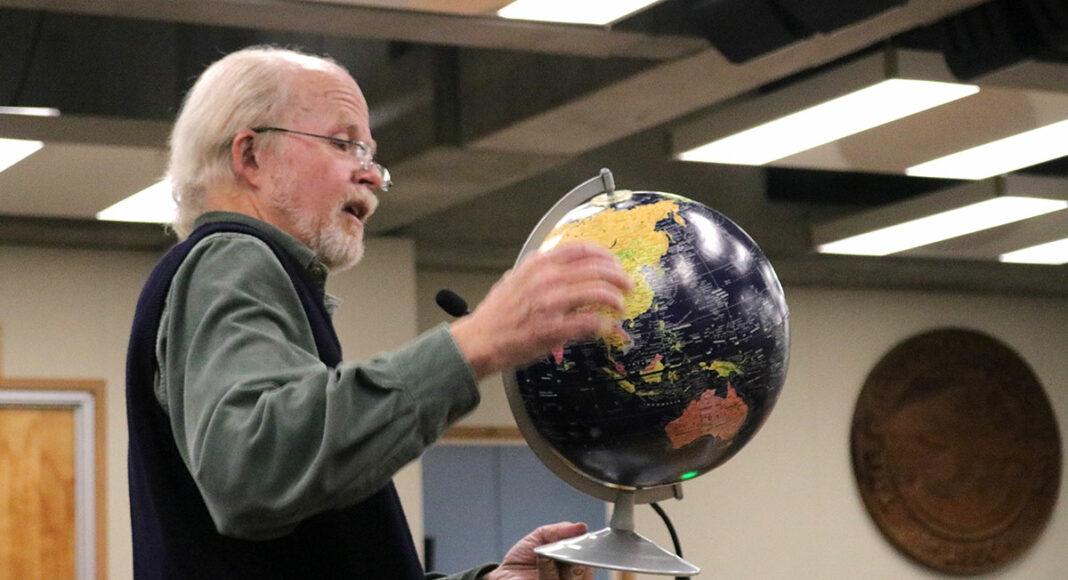Santa Cruz County is about to move one step closer toward figuring out what to do with its old freight rail corridor.
On Thursday, June 4, the Regional Transportation Commission (RTC) will evaluate a short list of options for the coastal corridor, a rail line that runs more than 30 miles through the county—all the way up to Davenport. When it comes to transportation policy, the most contested section stretches from Watsonville to Santa Cruz. That’s where a fight has simmered over the past few years about how best to move people to and from work. The RTC’s long-stated intention has been for a bike and pedestrian trail with a passenger train running alongside it.
Many bicycle advocates argue that there isn’t enough room or money to accommodate a fully functioning passenger train without giving the trail short shrift. Groups like Santa Cruz County Greenway and Trail Now called for the RTC to instead rip up the train tracks and replace them with trails for bikes and pedestrians only.
In January of 2019, the commission approved a 10-year contract with the freight rail company Progressive Rail. In approving the Unified Corridor Study that same day, the group all but agreed to prioritize doing public transit, like trains, on the corridor. A vote from the commission kickstarted the Transit Corridors Alternatives Analysis, which is weighing different options for the rail corridor and will be the subject of discussion on Thursday.
Three months ago, the analysis identified 25 possible transportation options to study. In advance of Thursday’s discussion, RTC staff is recommending that the commission narrow the list down to just four preferred rail trail options—bus rapid transit, electric light rail, an electric commuter train, and a mix of the train and bus options.
Together, the commission and the RTC’s staff are evaluating the various options according to a long list of criteria. Most of the criteria fall into one of three categories: “equity,” meaning that the mode of transportation is equitable, safe and reliable; “economy,” meaning that it’s fiscally sound, while supporting businesses and jobs and, lastly, the “environment.”
The commission is scheduled to see results of the high-level analysis of the pared-down options in September, according to a staff report. The full analysis is scheduled to be finished in January of 2021, two years after the study was initially approved.
Greenway and Trail Now supporters have expressed frustration that a trail-only option did not get serious consideration, although some activists have expressed openness in the past to the bus-rapid transit concept. Train supporters—from groups like Friends of the Rail and Trail and the Campaign for Sustainable Transportation—continue to advocate for the train options.
At its March meeting, the RTC approved $1.4 million in repairs to the rail line’s train tracks. Ripping up those tracks could open up legal questions, like whether the RTC must pay back the $11 million in state money that it took to purchase the rail line several years ago.
That doesn’t mean that the leading options currently are particularly affordable. According to last year’s Unified Corridor Study, the county’s transportation strategy going forward would cost a projected $950 million. Where much of that money would come from is unclear.
Due to social distancing guidelines during the Covid-19 pandemic, Thursday’s RTC meeting will be at 9:30am via teleconference. To join, go to zoom.us/j/83234221839 or call 669-900-6833. The conference ID is 832 3422 1839.















The Transit Authority for Monterey Court (TAMC) is doing a Monterey Bay Area Rail Network Integration Study that you can check out here https://www.tamcmonterey.org/programs/rail/monterey-bay-area-rail-network-integration-study/ where you can also take a survey.
The study goal is to prepare to implement the 2018 California State Rail Plan in the Monterey Bay Area by determining the best options for rail service between Monterey County and Santa Clara County, Monterey and Santa Cruz, and the Coast Rail Corridor.